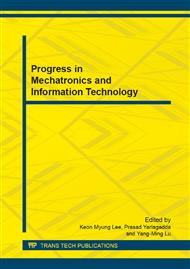p.343
p.347
p.352
p.356
p.360
p.365
p.373
p.378
p.385
An Improved Artificial Fish-School Algorithm Based on Group Behaviors and Self-Adaptive Mutation
Abstract:
According to the shortages of the standard Artificial Fish-school Algorithm (AFSA), this paper improves the behaviors of the fish-school by considering the group behaviors of neighborhood sensing effects, leader mode and Glowworm Swarm Optimization Algorithm (GSOA). Combining the self-adaptive step and vision, Gaussian mutation, Genetic Algorithm (GA), a new AFSA based on self-adaptive mutation operation is raised. By using the validation functions to test, the results show that the rate of convergence, optimization precision and the ability to avoid precocious phenomenon of the new algorithm are much better than the standard one.
Info:
Periodical:
Pages:
360-364
Citation:
Online since:
November 2013
Keywords:
Price:
Сopyright:
© 2014 Trans Tech Publications Ltd. All Rights Reserved
Share:
Citation:


